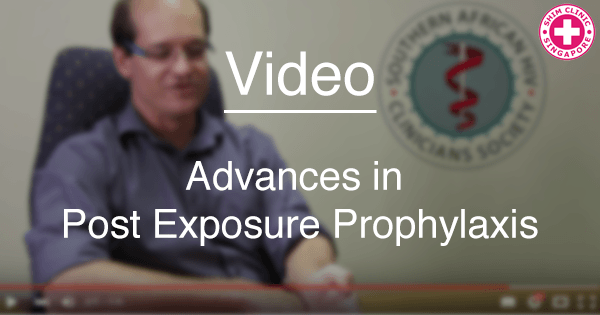HIV Post Exposure Prophylaxis (PEP) is one of the most discussed topics these days with regards to HIV/AIDS. It is a drug-based approach to prevent infection by HIV in cases where individuals may be exposed to HIV, either as an occupational hazard or situational hazard. It is of key importance in South Africa, which has one of the largest populations of people living with HIV.
In this video, Professor Francois Venter, Deputy Executive Director of the Wits Reproductive Health & HIV Institute, talks about new directions in the field of HIV PEP, particularly in South Africa. He discusses the recent changes that have rendered HIV PEP much easier in comparison to a few years ago.
HIV PEP Guidelines
Prof. Venter brings forward some facts about HIV PEP guidelines, mainly in South Africa. At the time when the video was shot, WHO was working on finalizing guidelines for HIV PEP on a world-wide basis. However, the South African Clinical Society was also actively working towards updating its guidelines related to PEP before the end of 2014. Although their department health guidelines have not been updated since last 25 years, they want to have modern drug regimens available for the South Africans as soon as possible. As of now, both the private and the public sector of the South African health industry offers relatively outdated drug solutions to the patients, including drugs which are not even available in the market anymore.
Changes in Recent Years
As one of the clinicians working in South Africa, Prof. Venter claims that the clinicians there have realized that better and stronger evidence regarding the performance of drug regimens will not be obtained. It is not imperative to prove whether two-drug or three-drug regimens are more effective. This is also true for modes of transmission of HIV. Assigning drugs or drug regimens to arresting only one or more certain types of transmission is not required. He states that, stopping “an amalgamation of all kinds of transmission” is the need of the hour.
He further stresses the point that the means and mode of exposure are not very relevant to the PEP regime. Certain modes present a higher risk of infection than the others. For example, sexual exposure presents a much higher risk of exposure rather than infection through a needle. As the principles of PEP are consistent irrespective of the kind of exposure, the divergence between occupational and non-occupational exposure should not be given much importance.
He claims that present-day drugs in the PEP regime are extremely safe, hence the tolerability of these drugs is really high. Previously the point of decision was what kind of regimen has to be chosen and which drugs have to be included whereas today the key decision is whether to take drugs or not. This major change now introduces the possibility of opting for the 3-drug regimen without much risk. In addition, this is independent of the mode of exposure.
However, simplification of the drug regimen chosen is still one of the challenges faced. An additional issue is to introduce this simplification into public as well as private sectors within a small time frame. Simplification of drug regimen and high tolerability of the drugs enables clinical trials to properly determine the length of a drug regimen.
The two key points on which Prof. Venter focuses is that people should refrain from the absolute classification of exposures into occupational (exposure by healthcare professionals in a hospital or STD clinic) and non-occupational. The line between these two is rather vague and this classification does not actively contribute to the designing of the drug regime. He concludes by stating that the combination of safer drugs, easier regimen and correct decision of an individual about whether or not to take drugs will optimize HIV PEP and make it easier and more accessible.

